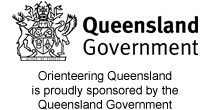Basic Rules for MTBO
A full list of rules, published by the Orienteering Australia, is available for download here.
These give more detailed specifications for organisers and course setters.
The basic rules pertaining to the competitors are listed below:
Environmental
Competitors must stay on tracks marked on the competition map. If terrain or road condition forces the rider to dismount, they must carry the bike on a marked track. No off-road shortcuts through the bush are permitted. Event organisers may grant permission to allow off-track riding in special circumstances eg. across open areas and areas of bare rock.
Courtesy and sensible behaviour are expected when mountain bike riders encounter walkers, runners, horseback riders, land-owners and others during an event.
Special care must be taken by competitors, observers, and officials to respect the local environment. Organizers should not place controls in designated environmentally sensitive areas.
Competitors and officials must avoid disturbing local flora, fauna and stock at the event and close gates where these are not left open.
Maps and courses
Maps may be any scale from 1: 10,000 to 1:30,000. They ideally need to be 30 x 30cm or less in size. They need to show all roads, tracks and their "rideability" plus major topographic information especially contours. They should be set to magnetic north.
- Course winning times for the longest course should not exceed 120 minutes.
- Course lengths are measured on the best available track route, not by a direct line.
- As route choice is the main navigation skill tested in standard (cross-country) courses, the emphasis is on long legs, and fewer control sites.
- Competitors should visit the control sites in numerical order, unless other formats (eg relay, score) are provided by the organiser.
- Sportident sticks must be attached to the bike. Competitors must not become separated from their bike during a competition, unless through injury or mechanical failure.
- Controls must preferably be placed beside established tracks or roads so that competitors do not leave the track to punch the control.
- Controls must not be placed at dangerous locations (eg on narrow tracks, downhill, in areas with poor visibility, or near dangerous obstacles)
Competitors
- All equipment must be in good mechanical order, particularly brakes.
- Practice and observe the rules of the road - keep to the left on roads and tracks.
- Approach all track/road crossings, corners and hill crests with caution.
- Ride defensively and in control at all times.
- Give way to faster riders wishing to pass on narrow tracks
- Riders going downhill should give way to riders going uphill
- Give assistance to injured competitors on the course. Organisers may give a restart or refund for the rider who gave assistance.
MTBO Course Planning
MTBO Course planning guidelines can be found here.
MTBO Course setter duties can be found here.
MTBO Mapping Standards
The MTBO International mapping standards can be found here.
Guildelines for making and drawing MTBO maps can be found here.
Basic rules are as follows:
The authorised map scales are:
- 10,000 for sprint
- 10,000 or 15,000 for middle and relay
- 15,000 or 20,000 for long distance.
NOTE: The track symbols stay the same size, whatever the scale.
- The colours brown, blue, green, yellow and grey are the same as for foot orienteering maps
- All black coloured features, except roads and tracks, are coloured 70% black (dark grey) ie. Buildings, fences, rock features etc.
- Built-up areas are coloured olive green
- Vegetation boundaries are shown with dark green.
- Bitumen roads - no change
- The course overprinting is magenta or purple
Wide tracks are 0.6mm and narrow tracks are 0.4mm:
- Solid line, fast riding, usually a good dirt road, or a very good track.
- Long dash (4.50mm) - medium riding.
- Medium dash (1.50mm) - slow, should be rideable for a competent rider.
- Short dashes (0.75mm) - very difficult to ride, may need to get off bike, but good riders may still manage to ride.
- The gap between dashes is7 0.60mm.
For estimates of riding speeds, the following ratios apply:
| Fast riding |
75 - 100% |
| Medium riding |
50 - 75% |
| Slow riding |
25 - 50% |
| Difficult riding |
0 - 25% |
Where a track junction is indistinct, the two tracks are separated by a gap on the map.
Clearings or overgrown tracks may be depicted using a yellow or green line, wider than the road/track symbol. A light green line indicates long grass (and the junction may be difficult to identify). A mid-green line indicates high, thick vegetation that would make progress difficult to very difficult.




